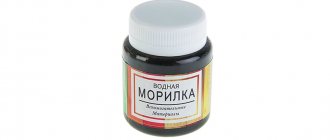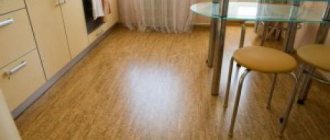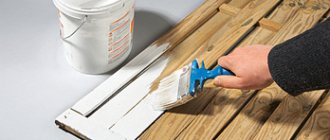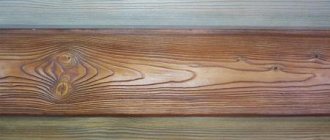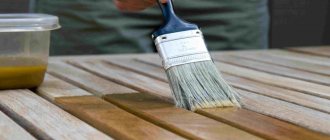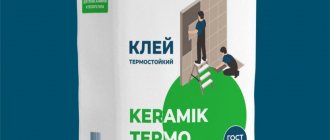At home and at work there are a lot of paper and cardboard items that often require gluing. In life we simply cannot do without such a product as paper glue. It is especially necessary for our children and creative people involved in appliqué, papier-mâché, scrapbooking and quilling. Many people have been familiar with silicate glue, PVA and paste since childhood.
A good paper glue has the following characteristic properties:
- almost odorless;
- consistency that allows the mixture to be evenly distributed over the surface (average between thick and liquid);
- ease of use;
- colorless when dry, lacking a yellow tint after some time.
From the wide variety of adhesive compositions, let's take a closer look at those that we need for family creativity. They should be kept on hand at home.
Glue stick
The most common and accessible is pencil-shaped glue. It is very convenient to use thanks to the compact bottle, which is comfortable to hold with your hand. It has a dense consistency, so it is used sparingly. Successfully glues paper and cardboard, as well as textile materials.
It is applied simply and evenly and does not stain your hands. When working with it, no additional applicators are needed. Suitable for gluing small or irregularly shaped parts, since only the required amount of glue is applied in an even layer. Under the closed cap it does not dry out for a long time, when processed with it the surface is not deformed, and after drying there are no traces left. It is perhaps the most suitable type of glue for children's creativity.
The only drawback of the glue stick is its weak gluing ability. He won’t be able to handle a material more complex than thin cardboard.
Advice! When choosing a glue stick, test it on a piece of paper. If it is very soft, it will leave lumps, and if it is too hard, it will not adhere well. The correct glue stick should be applied easily, gliding smoothly across the surface.
Available in packages of different sizes. Choose a comfortable pencil that matches the size of the child's hand.
Exchange for a new banknote at the bank
I can say with complete confidence: damaged money can be handed over to any bank and you can receive absolutely intact bills instead.
However, there are several conditions :
- you must provide all “original” parts of the bill
- Serial numbers and banknote denominations must be readable
If these conditions are met, go to the bank: they are required to accept money that is torn in several places, punctured, dirty, frayed or frayed at the edges.
PVA
These compounds thoroughly glue both paper and thick cardboard. They are also suitable for creating appliqués from fabric, threads, feathers, and natural materials. Liquid PVA is ideal for those who use fragile raw materials (for example, dry leaves) in their creativity: it will create a neat but strong gluing. The composition does not deform the paper and does not leave yellow spots. It is easy to apply and distribute.
The glue, in general, is applied in an even layer on both surfaces, which are then pressed firmly against each other. The setting time is a few seconds, and complete drying is achieved within a day. PVA glue for paper and cardboard is harmless, does not have a pungent odor, is colorless when dry, can be easily removed from any substrate, and can be easily washed off your hands.
The downside to using PVA is that it dries in a loosely closed bottle. However, you can always remove the dried cork and get to the remaining liquid substance.
High-quality PVA is quite thick, white in color, and has a slight specific smell (not at all pungent). The glue is available in two packaging options: a special bottle with a double cap that simultaneously dispenses the glue and prevents it from drying out, as well as a bottle with a brush on the lid for ease of application.
It is also called liquid glass. It is used for fastening paper and cardboard elements, as well as for making paper crafts that do not require special aesthetics, such as papier-mâché. Reasons: the initially colorless glue acquires a yellow tint over time, stains and deformation often appear on the canvas, and the gluing along the seam becomes brittle. Another unpleasant moment: if such glue is used to mount black and white photographs in an album, then the photograph in the places where the adhesive is applied will fade and the image will disappear. However, currently silicate glue contains additives that successfully eliminate these shortcomings.
Silicate glue has many advantages. It firmly connects the parts, is used sparingly, dries in a short time, and is simply washed with running water. Liquid glass is excellent for gluing boxes, joining large elements made of paper and cardboard, as well as repairing glass products such as vases, aquariums, etc.
Advice. When choosing silicate glue, look at its consistency. High-quality glue should have the appearance of a viscous transparent liquid without clots, lumps, or cloudiness.
We recommend paying attention to the packaging; choose the one that suits your purpose. For example, glue in a bottle with a dispensing cap or in the form of a pencil equipped with an applicator is better suited for children.
how to glue torn pages?
Discussion of issues related to professional restoration of library materials
Moderator: res-book
how to glue torn pages?
ann » 18.03.2008 13:45:59
I'm trying to bring an old big book back to life.
Several pages are torn, how can I fasten them together?
I recently dealt with a “restored” old map, it was all yellowed from the tape, the colors had deteriorated
ann Messages: 1 Registered: 03/18/2008 13:37:42
kudryavtsev » 22.03.2008 17:02:38
If you live in Yekaterinburg, come to the Center for Preservation of the Belinsky Library Collections. We can give you some restoration paper.
kudryavtsev Messages: 468 Registered: 02/14/2007 11:21:35 From: St. Petersburg
- Website
- ICQ
Old Leaf Man » 22.03.2008 22:29:11
You can strengthen it, but not with tape - this idea is correct
You will need: glue, thick paper and thinner paper.
Glue: have you ever made Ordinary Flour Paste? No? Then we go to you!
But seriously: if you don’t know the recipe, I’ll be happy to share, you know, then you need to cook that same paste, because it is the basis of the special restoration wheat glue. As a last resort, you can take the so-called. “glue stick”, but in no case PVA, silicate and similar, sorry, muck.
Next is paper: ideally, you could order/buy special restoration paper. A thin one (about 9 grams) for fixing gaps and a denser one to make up for losses, if any...
In general, I would like to ask what kind of book it is, how “big” and “old” it is, etc. characteristics, if you don't mind? Knowing this, at least the most general, information, it would be easier to give you some more specific advice :)
Old man-leaf Messages: 13 Registered: 02/11/2008 19:38:55
Moishe » 04.06.2008 22:18:23
The old leafy man wrote:
Glue: have you ever cooked Ordinary Flour Paste? No? Then we go to you!But seriously: if you don’t know the recipe, I’ll be happy to share, you know, then you need to cook that same paste, because it is the basis of the special restoration wheat glue.
Dear Old Leaf Man! Please share your flour paste recipe! I've tried it many times in my life - it warps the paper. Apparently there is some kind of secret.
Moishe Messages: 26 Registered: 06/04/2008 11:44:19
kudryavtsev » 08.06.2008 22:18:28
Glue has many secrets. But paper warping is not due to the cooking of the glue, but to its use. There is simply the concept of “liquid glue” and, accordingly, “thick glue”. Liquid as containing more water causes more warping. Liquid glue can be dehydrated on filter paper. For gluing paper and leather, the consistency should resemble thick translucent sour cream without lumps. Applied to the pads of the thumb and index finger, the adhesive mass should cause a feeling of gluing, “grabbing.” This is achieved by the correct combination of proportions of flour and water, filtering after cooking, the quality of the flour (including the degree of its dryness) and the purity of the water. The restoration adhesive contains only flour, water and (optional) preservatives. It is better to use not flour and fish paste, but a starch paste made from wheat (required!) starch. It is thicker and stronger. To prevent the paper from warping after gluing, the sheets must be kept between felts in a press for up to two weeks.
kudryavtsev Messages: 468 Registered: 02/14/2007 11:21:35 From: St. Petersburg
- Website
- ICQ
Old Leaf Man » 20.06.2008 09:20:09
I apologize for the long silence.
I agree with Mr. Kudryavtsev on all points.
However, I think it’s worth clarifying a few points: the paper could have warped not only from too liquid glue and lack of pressing. She could have been “led”, for example, by an incorrectly (not proportionally) applied sheet of paper-with-which-you-sealed-the-tear.
I would also like to know the preparation method you used when making the glue? (if you don’t mind, describe it step by step)
I think once we understand the process, we could find a way to improve it
And the last question - what type of paper are you going to glue? (or at least name the approximate year of creation of the book/document) The fact is that the recipes and glue compositions, for example, for coated and rag paper of the 18th century are very different from each other - there are many secrets, as you have already correctly noted
Old man-leaf Messages: 13 Registered: 02/11/2008 19:38:55
Moishe » 20.06.2008 20:05:23
kudryavtsev wrote: For gluing paper and leather, the consistency should resemble thick translucent sour cream without lumps. Applied to the pads of the thumb and index finger, the adhesive mass should cause a feeling of gluing, “grabbing.” This is achieved by the correct combination of proportions of flour and water, filtering after cooking, the quality of the flour (including the degree of its dryness) and the purity of the water. The restoration adhesive contains only flour, water and (optional) preservatives. It is better to use not flour and fish paste, but a starch paste made from wheat (required!) starch. It is thicker and stronger. To prevent the paper from warping after gluing, the sheets must be kept between felts in a press for up to two weeks.
Thank you! I made the glue thicker and dried the flour a little in the pan, and that helps.
Questions: is starch better than flour?
What is “cloth”?
Moishe Messages: 26 Registered: 06/04/2008 11:44:19
Moishe » 20.06.2008 20:11:34
Hello!
The old man-leaflet wrote: I apologize for the long silence.
Everything is fine. That's not for long.
The old man-leaflet wrote: She could have been “led”, for example, by an incorrectly (not proportionally) applied sheet of paper-with-which-you-sealed-the-tear.
Is it possible to tell us more about this? I'm an amateur.
I would also like to know the preparation method you used when making the glue? (if you don’t mind, describe it step by step)
I think once we understand the process, we could find a way to improve it
Gradually pour the flour into the water, stirring constantly. That's what I was taught as a child.
And the last question - what type of paper are you going to glue? (or at least name the approximate year of creation of the book/document) The fact is that the recipes and glue compositions, for example, for coated and rag paper of the 18th century are very different from each other - there are many secrets, as you have already correctly noted
I'm still afraid to start restoring old books. When, with God’s help, I begin, it will most likely be “late” for you – the second half of the 19th – early 20th.
Moishe Messages: 26 Registered: 06/04/2008 11:44:19
Old Leaf Man » 26.06.2008 21:57:10
Good day to you too, Moishe!
First of all – amateur or not amateur – that’s not the point! Once upon a time we all didn’t even know how to walk, so it’s not worth it, it’s not worth it
So, I'll try to answer consistently.
About the share: any paper, whether hand-made or machine cast, has a share. Sometimes it is visible, sometimes it is not. But it’s there, that’s a fact!)
You can determine it in the following ways: hold the paper up to the light - long fibers will be visible in the structure of the paper, all in one direction. Another way is to wet a piece of the paper in question and try to tear it from top to bottom and from right to left. Along the lobe it breaks neatly and easily, against it - on the contrary, crookedly and obliquely.
About glue: what about the proportions?
And you don't add anything else?
About “late”: the term captivated me, I honestly admit!
However, I consider it my duty to clarify that among the books of the 19th and 20th centuries there are monuments that are in no way inferior to the more ancient ones in terms of their historical and cultural value. Not to mention the fact that the restoration of monuments of this time now raises an immense number of questions and discussions in science and is a complex and difficult task. Here my advice will be simple: start working with monuments of large circulation and not belonging to Rare Books.
For my part, I will allow a couple of rather personal questions: would you please specify in which city, in which organization you work? What funds are you dealing with? Do not think that the questions have some kind of negative connotation, this is rather my personal interest.
Old man-leaf Messages: 13 Registered: 02/11/2008 19:38:55
Moishe » 27.06.2008 01:57:33
Good day!
The old man-leaflet wrote: So, I’ll try to answer consistently. About the share: any paper, whether hand-made or machine cast, has a share. Sometimes it is visible, sometimes it is not. But it is there, that’s a fact!) You can determine it in the following ways: hold the paper up to the light - long fibers will be visible in the structure of the paper, all in one direction. Another way is to wet a piece of the paper in question and try to tear it from top to bottom and from right to left. Along the lobe it breaks neatly and easily, against it - on the contrary, crookedly and obliquely.
Thank you very much, I understand.
About glue: what about the proportions?
Until thickened. It turns out to be about 2-2.5 tablespoons per 0.6 “drop” (such an American measure of liquid). I take distilled water. Apparently, I used to make it too liquid.
And you don't add anything else?
There is nothing.
About “late”: the term captivated me, I honestly admit!
I heard this term in childhood in conversations between archaeologists and historians.
For my part, I will allow a couple of rather personal questions: would you please specify in which city, in which organization you work? What funds are you dealing with? Do not think that the questions have some kind of negative connotation, this is rather my personal interest.
I don’t work for any organization, it’s more like a hobby. I live in the suburbs of New York. The books are Jewish, of religious content, located in private collections.
Moishe Messages: 26 Registered: 06/04/2008 11:44:19
Moishe » 07.07.2008 03:26:08
kudryavtsev wrote: If you live in Yekaterinburg, come to the Center for the Preservation of the Belinsky Library Collections. We can give you some restoration paper.
What is restoration paper? What is it called in English? I want to go shopping, but I don't know what to ask
Moishe Messages: 26 Registered: 06/04/2008 11:44:19
kudryavtsev » 10.07.2008 00:47:46
This is paper with neutral acidity, hand-cast for old books. It is best to buy paper from the Japanese company Japico (I think they have a representative office in America).
kudryavtsev Messages: 468 Registered: 02/14/2007 11:21:35 From: St. Petersburg
- Website
- ICQ
Moishe » 10.07.2008 01:09:48
Good day!
kudryavtsev wrote: This is paper with neutral acidity, hand-cast for old books. It is best to buy paper from the Japanese company Japico (I think they have a representative office in America).
Is it somewhat transparent? And in general, how is science supposed to glue torn places if there is text?
Last edited
Moishe
07/10/2008 03:48:55, edited 1 time in total.
Moishe Messages: 26 Registered: 06/04/2008 11:44:19
Moishe » 10.07.2008 01:12:18
Good day!
The old man-leaflet wrote: However, I consider it my duty to clarify that among the books of the 19th-20th centuries there are monuments that are in no way inferior to the more ancient ones in terms of their historical and cultural value. Not to mention the fact that the restoration of monuments of this time now raises an immense number of questions and discussions in science and is a complex and difficult task.
I forgot to ask: what are these discussions and what are the difficulties? Can you at least say a few words?
Moishe Messages: 26 Registered: 06/04/2008 11:44:19
Old Leaf Man » 15.07.2008 23:15:26
Good afternoon, Moishe.
There may be restoration paper in the store, but the store must be special.
About the transparency of paper: there are two basic concepts - rupture and loss. Losses (lost parts, torn pieces, holes, etc.) must be filled with paper that matches the density of the original base. The tears are glued with thinner paper (more often - almost transparent - just like the text: the text will remain visible, and the tear will be sealed).
About the complexity of the issue of restoration of “late books”: the difficulty is caused mainly by the problematic nature of the basis of late books - be it coated paper that does not tolerate water or printed publications from the times of the Great Patriotic War. Or revolution. Or emigration.
Or, for example, newspapers. Periodical publication, a reflection of most processes occurring in society. Documents are sometimes priceless. But the quality of the newspaper paper... Newspapers were designed for 1-2 days, read and... used on the farm :)
But you need to save it somehow.
I hope I'm making myself at least a little clear?
Old man-leaf Messages: 13 Registered: 02/11/2008 19:38:55
Return to Book binding and restoration
Who's at the conference now?
This forum is currently viewed by: no registered users and guests: 0
Super glue
Superglues are a line of cyanoacrylate adhesives. This includes “Super Glue”, “Second”, “Super Moment”, etc. If you create crafts from different materials, which include not only paper and cardboard, but also iron, plastic, rubber, wood, etc., then you won’t be able to get by with traditional office glue; you’ll have to resort to heavy artillery.
Currently, there are many universal adhesives that instantly hold together any materials. “Superglue” comes to the rescue like a lifesaver, but you shouldn’t give it to children. The composition has the highest adhesion, instantly sticks, and is able to quickly and firmly glue fingers. And some brands are toxic upon contact with skin. Therefore, it must be used very carefully.
The four types of paper glue listed are the most convenient and necessary when doing creative work.
How to fix cracks yourself using tape
If a document has damage in the form of a crack, its restoration requires sizing. But it should be minimally noticeable. This is best suited for documents that I view only from the outside. In this case, we use the reverse side for repairs.
To repair cracks, you will need special adhesive tape. Ordinary tape that is lying around in your desk drawer will most likely not cope with the task, since its shiny surface stands out visually and most often has a slightly yellowish tint.
It is better to use a tape made of transparent material with a matte surface and without colored inclusions. If your document is really important, buy special tape from an office supply store.
Clear the table surface and make sure it is absolutely clean.
Take the document and place it on the table so that the top side of the document is on the bottom. Connect the torn edges of the document as much as possible. It is recommended to press down one side with a book or other weight to make it easier for you to join the edges.
Cut a long piece of duct tape. Do not distribute the tape over its entire length at once, as this gives the effect of waves that arise due to the uneven adherence of the tape to the surface of the document.
It is best if you first gently press the edge of the tape, and then stretch it without effort and carefully stick it to the end. Trim any excess tape showing from the edges of the document.
What other glue is suitable for paper and cardboard?
For gluing cardboard, “gum arabic” is successfully used - this is acacia gum dissolved in water. Take 10 g of gum per 20 ml of water. The cooking process lasts several hours.
To work with thin paper, water-based acrylic adhesives are used. However, it should be remembered that after some time they turn yellow.
A dextrin solution is also suitable for gluing paper, which is easy to prepare yourself. Potato starch is placed in a heat-resistant container and sent to a warm oven. Then the temperature is gradually increased to 160 degrees and held for 1.5 hours. Under the influence of hot air, starch is broken down, and dextrin is obtained, which is mixed with water, heated slightly until dissolved, then glycerin is added.
Another common and easy way to adhere paper and fabric is using spray adhesive. Setting time is only a few seconds. Traces of glue do not remain on the material, which allows parts to be re-glued many times. Uniform spraying ensures economical glue consumption; one can lasts a long time.
An excellent option for gluing paper and wood products is considered to be wood glue, which can be prepared at home. It is important to know that such glue cannot be stored for a long time in its liquid state, mold quickly appears on it, and a putrid odor arises. Therefore, a gelatinous mixture is prepared that can retain its qualities for a long time. Subsequently, pieces are broken off from it and heated over moderate heat.
As you have already noticed, the composition of glue for paper and cardboard is very different. When choosing, follow our advice, and the result of your work will be excellent.
Universal means
The “Mars” product is most often used to bond leather and dermantine, but with its help you can reliably connect even fairly thick cardboard. A thin layer of the composition should be applied to the material, wait five minutes, then apply a second layer. Everything will be firmly connected after a day.
A product called “Unicum” will provide a reliable connection; this is its main feature. You need to know how to use it - apply a layer of the composition, let it dry for three minutes, then apply a second layer. You can use the product after a day.
Scotch-Weld aerosol also works well when you need to bind paper - it is transparent, sets quickly, and is easy to work with. As you can see, the composition can be very different - temporary, waterproof, acrylic, aerosol, long-lasting, natural, and so on. When choosing it, follow these recommendations, and then the result will always be perfect.
If an exchange is refused
First of all, the money holder must receive from the bank a written justification for the refusal to exchange , which is especially important when refusing a person with a large amount. After this, if the client considers the answer to be insufficiently substantiated, he can submit a complaint to the main department of the Central Bank, which will resolve the issue as quickly as possible. But, of course, it only makes sense to do this if the banknote actually meets the criteria for exchange.
Of course, you should not come with banknotes on which any additional actions have been performed in order to increase their value. In this case, the bank will not only refuse the exchange, but will also consider (and not unreasonably) the client a counterfeiter, which will become the basis for bringing him to justice. And probably few people need this.
How to restore the cover
Book covers often get wrinkled at the corners. A good way to restore them is to soak them in superglue. The corners will become rigid and will not wrinkle. This method is also suitable for children's books made of thick cardboard.
To restore the cover, you will need thick cardboard
If the cover has become unusable or has lost some part, use your imagination. Make a blank from thick cardboard. Wrap the workpiece with paper that matches the color, so that one side of the cardboard is completely covered, and on the other side of the workpiece the edges of the sheet are folded 3-4 centimeters. Decorate to your liking.
You can print an exact copy of the previous cover on a color printer or take elements of the old one and make a custom collage.
Brief description of the substance
Formaldehyde (methanal, formic aldehyde) is a colorless, toxic, highly soluble gas in water, polar solvents and alcohols with a pungent odor, hazard class 1. An aqueous, urea-stabilized solution of formaldehyde is used in the furniture and woodworking industries in the production of chipboard and other “plywood” materials.
Standard levels of formaldehyde in the air:
- Maximum single maximum permissible concentration (MPC) of formaldehyde (Russia) - 0.05 mg/m³;
- The average daily MPC (Russia) is 0.01 mg/m³;
- MPC of substance in the air of residential premises (European countries): 120 μg/m3;
- Odor threshold: 0.07—0.2 mg/m3;
- Threshold of the reflex response of the animal body: 0.04-0.098 mg/m3;
- Threshold of irritant effects on the mucous membrane of the human visual organs: 0.012 mg/m3.
We suggest you read How to get rid of rust on pipes
Correct Application
Each version of the adhesive mixture has its own characteristics of use. Therefore, before use, carefully read the instructions that come with the product. If you don't have one, use the tips below.
Apply with a brush, or less often with a notched spatula. The glue should be evenly and thinly distributed over both surfaces that will be held together. If necessary, after the first layer has dried, apply a second one. The glue is allowed to dry and absorb a little, then the parts to be glued are pressed tightly.
Homemade adhesives
To glue paper, make applique or other creative items, crafts, you don’t have to go to the store. You can make durable glue with your own hands. For this purpose, you need to take water and potato starch, and then proceed as follows:
- pour a little starch into the container,
- dilute with a small amount of cold water until you get a viscous mass,
- put the product on the fire, add boiling water, mix well,
- After boiling, immediately remove the mixture from the stove, cool, stirring regularly to avoid lumps.
To give the gelatinous mass even greater adhesive force, you can add a little borax to it - about 25 g per liter of finished paste.
Another recipe for homemade paper glue is:
- soak gelatin (1 pack) in a container, adding a little water to it, leave for 5-6 hours,
- pour a glass of water into a saucepan, place it in a water bath, add dissolved gelatin and a spoonful of flour into the water,
- heat until the mass resembles thick sour cream,
- remove the product from the fire,
- pour in a tablespoon of glycerin and alcohol.
You can also dilute hard wood glue at home, which is sold in bars or in powder form. The glue is diluted with cold water, boiled in a water bath, stirring vigorously until it begins to bubble. Afterwards, remove it from the heat, allow it to cool and use it to make crafts.
How to clean and dry a book
Ink stains can be removed with hydrogen peroxide. Refined gasoline will help remove oil stains. Greasy marks are removed as follows: the stain is sprinkled with talcum powder or flour, then ironed with a warm iron through blotting paper. Traces of rust are removed with citric acid or erased with an eraser.
To remove a greasy stain from a book, sprinkle it with talcum powder and iron it through the paper.
The edges are cleaned with a regular eraser or fine sandpaper.
If the book gets wet, iron it through a clean white sheet and then put it under a press. The pages will dry, but will remain flat and not deformed.
Free lessons from experts
They will help you take the first step in creating a developing space for your child at home
What not to do
What actions should be avoided:
- when gluing money, there is no need to rush, you need to carefully adjust the torn parts to each other;
- Do not leave the restored banknote on the surface placed horizontally; it is better to dry it vertically.
To avoid breaks, money should be carried in a purse. It is also necessary to check banknotes for flaws without leaving the cash register.
